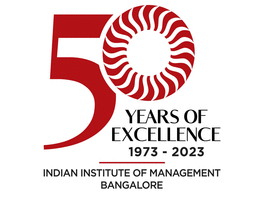Please use this identifier to cite or link to this item:
https://repository.iimb.ac.in/handle/123456789/12607| Title: | Sustainable personal transportation: strategy for promoting green automobiles | Authors: | Gopalakrishnan, D. Sharma, Mukesh |
Keywords: | Automobile industry;Transportation | Issue Date: | 2010 | Publisher: | Indian Institute of Management Bangalore | Series/Report no.: | EPGP_P10_42 | Abstract: | With the fall of General Motors in year 2008-09, automotive industry showed signs of fatigue in developed nations. Automakers such as Toyota who are known for their resilience developed cracks in their historical legacy. The center of consumerism started shifting from west to east around a decade ago. It was followed by the rise of emerging economies such as India, China, Brazil and Russia. Automotive industry which is symbolic to the growth of nations from past 100 years has undergone phenomenal transitions and changes. The path of those developments have established few conventions and broken few. It will be appropriate to say that the entire world is driven by conventions. Once a convention gets established and then some change in the scenario or situation makes another convention desirable, then it is extremely hard to bring about the change and establish the better convention. This is also known as the bandwagon effect14 and uncoordinated decisions of individuals make us reach a less than optimal solution. This is what happened with the QWERTY keyboard15 in the year 1873 which despite of not having the best layout of letters has become an established norm for keyboard layout across the world. The same happened to the nuclear reactors in 1949 when the light water nuclear reactors which were inferior to the heavy water nuclear reactors, but went on to become the norm of nuclear reactors across US. The same happened to automobiles in the early 1900s. In 1890, 3 ways of powering the automobiles were available the electric, steam and gasoline. Of these, the gasoline engine is the most inferior technology because of the lowest energy efficiency and despite that fact it has become the norm of the world and today almost all cars run either on gasoline or diesel. We may argue that the efficiency of today s gasoline engine technology is far superior than the steam engine technology, but we must also realize that the gasoline engine has undergone improvements through research and development for around a 100 years while on the other hand both the electric and steam power driven technology died their natural death by the year 1920. Hence, the technologies cannot be compared today. It is this fact which we should understand that it is very important to recognize the potential of all options available with us if we want to lock-in with the better option in the future. Once an option gets a head start over other options, then the other superior technologies may never get a chance to develop. Thus we need to realize that even though the conventional automobiles meet the demands for today under the given constraints, they are not the best option for the future. We need to realize that green is the way for future. Not only from the point of view of air pollution or global warming, green is important from the point of view of sustainability. Thus green automobiles are not just a fad. They are here to stay and they are here to drive the future. The earlier we are able to realize the better will it be for us. And this will require high levels of coordinated efforts from all stakeholders. Electric cars which saw a growth pattern from year 1900 to 1920 suddenly went in to oblivion for a period of 70 odd years. It is now since the past two decades that the world has started worrying about the damage caused by human interventions to environment. The proponents of world mobility solutions have started looking for solutions of sustainable mobility. We also come from world of mobility solutions and it was then that we decided to explore this area further16. This report has been prepared not only for practitioners but also for academicians to understand the dynamics of sustainable mobility. Once the conventions are frozen it is very difficult to brain wash the conventions from human mind and therefore it is important to understand the consumer psychology and develop a strategy to address the challenges in step by step manner. We understand that demand drives the development but we cannot ignore the supply side of the system. In order to challenge the convention supply side needs will and commitment. This report will also address the perspectives from supply side and finally as an obligation, without any researcher s bias, we have also given a framework of recommendations to make electric car adoption a reality for sustainable mobility.h | URI: | http://repository.iimb.ac.in/handle/123456789/12607 |
| Appears in Collections: | 2010-2015 |
Files in This Item:
| File | Size | Format | |
|---|---|---|---|
| EPGP_E34568_P10_42.pdf | 4.91 MB | Adobe PDF | View/Open Request a copy |
Google ScholarTM
Check
Items in DSpace are protected by copyright, with all rights reserved, unless otherwise indicated.
